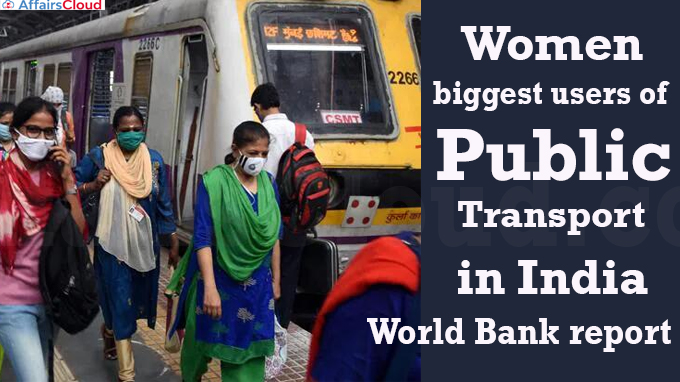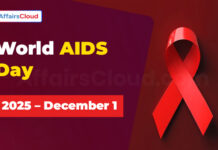 According to the “Toolkit on Enabling Gender Responsive Urban Mobility and Public Spaces in India,” released by the World Bank (WB), women are among the most frequent users of public transportation in India, accounting for 84% of all women journeys.
According to the “Toolkit on Enabling Gender Responsive Urban Mobility and Public Spaces in India,” released by the World Bank (WB), women are among the most frequent users of public transportation in India, accounting for 84% of all women journeys.
- The report is intended to serve as a blueprint for Indian cities on how to construct public transportation that is more accommodating the travel needs of women.
Backdrop
i.The World Bank toolkit was developed in response to a World Bank-sponsored survey of 6,048 respondents in Mumbai (Maharashtra) in 2019.
ii.The absence of an inclusive design, in addition to affordability and a lack of safety, has an impact on women’s presence in public areas and labour force participation in India, which was 22.8 % in 2019–2020).
- India has one of the lowest female labour force participation rates in the world, at 26.2% in 2020-21.
iii.The recommendations in the toolkit are based on a review of more than 50 international best practices and efforts by cities worldwide.
WB Report Recommendations
i.The WB toolkit for Indian cities proposes including a gender perspective into new and existing transportation policies and strategies.
- It calls for an increased female representation in decision-making in key organisations such as local governments and public transport authorities.
ii.The report also urges for improvements to pedestrian and cycling paths as well as street lights.
iii.It is based on the practical experience of planning and implementing gender-responsive urban transportation initiatives in Chennai (Tamil Nadu) as part of the World Bank-supported Chennai City Partnership project.
- A two-year action plan has also been developed by the newly established Gender and Policy Lab in the Greater Chennai Corporation to promote a safer and more inclusive city.
Key observations from the report:
i.The World Bank report also examined the travelling pattern of men and women.
- According to the report, 45.4 % of Indian women walk to work, while only 27.4 % of males go to work by foot.
ii.Most women who use public transportation travel by bus, which is a slower mode of transportation, as it is more affordable than rapid modes, which are expensive.
iii.According to the report, a good grievance redressal system can assist expedite sexual harassment allegations.
iv.The toolkit includes practical measures that can help policymakers, business and community-based organisations, and others ensure safe and inclusive public areas and public transportation for women in India.
Recent Related News:
In November 2022, the World Bank (WB) released a report titled ‘Financing India’s Urban Infrastructure Needs: Constraints to Commercial Financing and Prospects for Policy Action’. As per it, India needs to invest USD 840 billion over the next 15 years till 2036 (in 2020 prices) or an average of USD 55 billion (Rs 4.46 lakh crore) per annum into urban infrastructure to meet the needs of fast-growing urban population.
About the World Bank (WB):
President – David Robert Malpass
Headquarters – Washington D.C, United States (US)
Establishment – 1944




